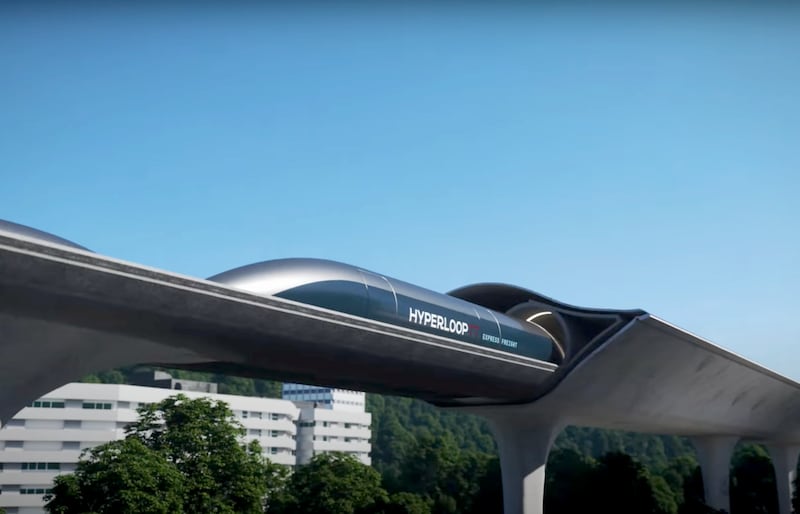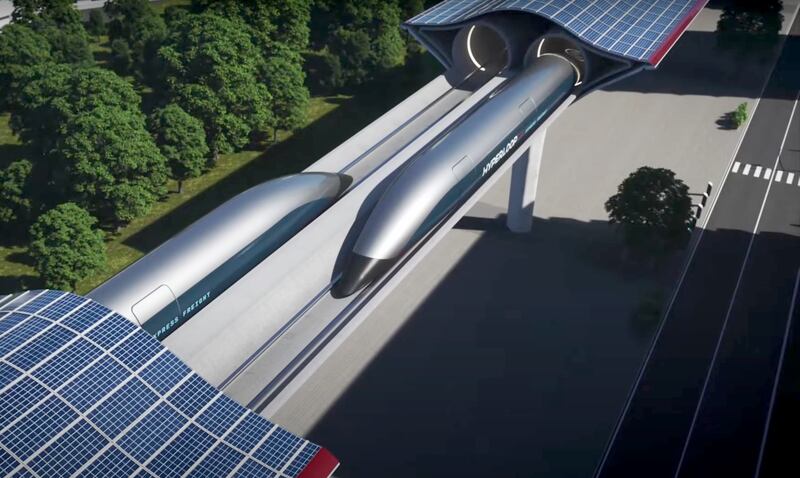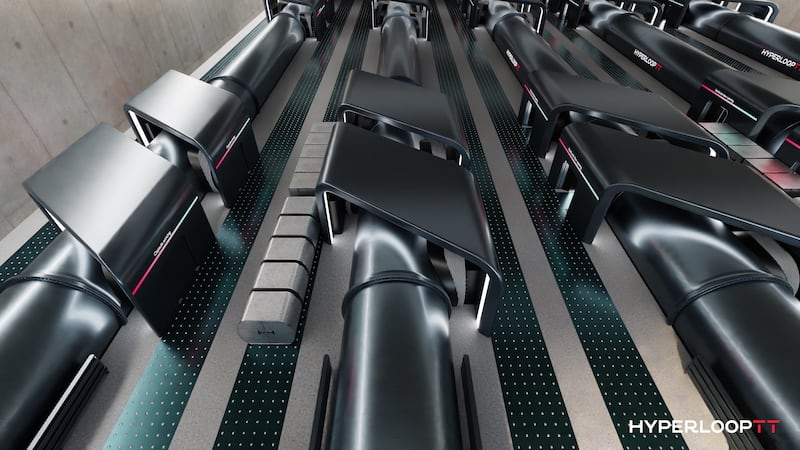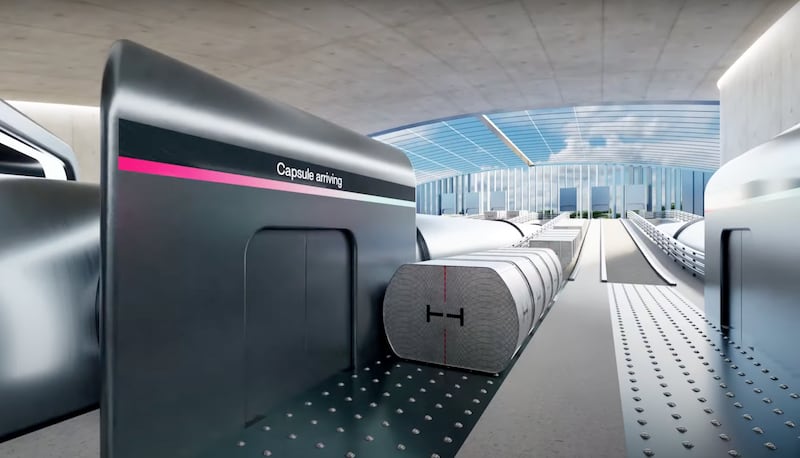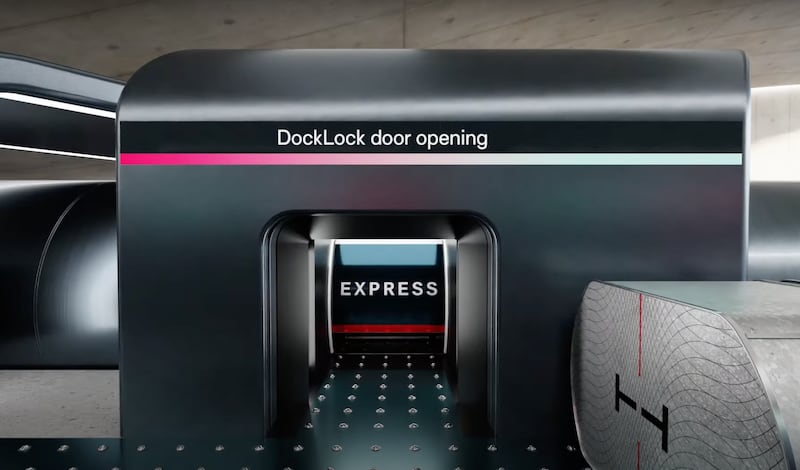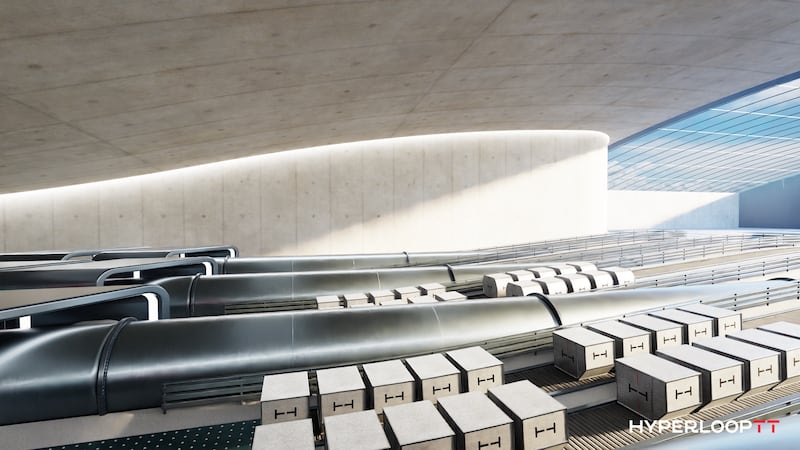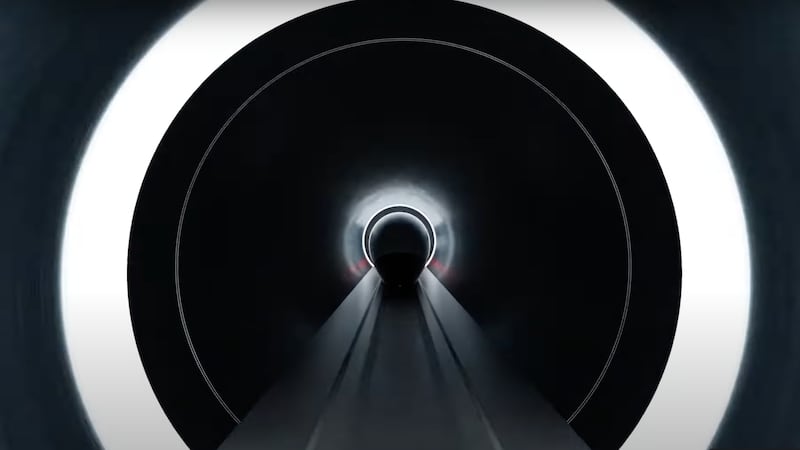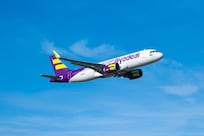Once hailed as the future of high-speed sustainable transport, the ambitious plans for a Hyperloop passenger network faded into the background when world travel ground to a halt during the global pandemic.
A resurrection of the technology to deliver cargo at high speed between freight terminals now appears under way with the release of a new design from a leading Hyperloop company and €800 million ($851 million) of funding for a first commercial network in Italy.
Hyperloop Transportation Technologies, a Los Angeles-based company with offices in Dubai, is pressing ahead with an express freight operation that promises fast unloading and loading to relieve pressure from congested shipping terminals.
"Hyperloop Express Freight will fundamentally transform how goods are transported globally,” said Andres de Leon, chief executive of HyperloopTT, in a statement on Monday.
“By incorporating key innovations like fast automated loading systems, maximised freight capacity and flexible configurations, we have developed a hyperloop design optimised for transporting freight at unprecedented speeds at cheaper rates than currently offered by air and road.”
HyperloopTT Express Freight will enable fast onboarding of freight with staggered doors for simultaneous loading and unloading, double doors on both sides of the capsules and a fast, energy-efficient rollerball loading system.
Specially designed capsules can fit standard air cargo containers by lowering the floor to maximise freight volume.
“This new standard for shipping will enable greater efficiency, sustainability and flexibility in supply chains worldwide,” said Mr de Leon.
“We are proud to be leading the way in this transportation revolution."
Space X and Virgin projects
The concept of transporting passengers using vacuum tube technology has existed since the late 19th century.
Huge investments from private companies and entrepreneurs, including Elon Musk and Richard Branson, edged the technology closer to reality with working designs of magnetically levitated pods, capable of travel at speeds approaching 1,000 kilometres per hour.
Building entirely new infrastructure to develop the technology further appears to have been a major stumbling block, despite interest in developing freight and cargo systems around the world, including in the UAE.
It was announced in November that Mr Musk’s SpaceX Hyperloop project would be indefinitely shelved.
With its staggered doors and rollerball technology, the latest designs from Hyperloop TT show how freight transport systems could be revolutionised in the near future.
It is three years since Virgin Hyperloop successfully tested passenger pods in the Nevada desert, albeit at speeds of only 160kph, a fraction of estimated capabilities.
The company, which is majority-owned by DP World, has since restructured and is focused on developing the technology for cargo.
DP World Cargospeed, a partnership between DP World and Virgin Hyperloop, was established to provide hyperloop-enabled cargo systems for the delivery of palletised cargo around the world.
DP World declined to comment on its current plans for the technology.
Trade and retail logistics are experiencing a huge period of growth, post-pandemic.
According to Precedence Research, the global retail logistics market size is expected to see annual growth of 12.4 per cent and will exceed $465 billion by 2030.
That expansion is likely to place considerable pressures on supply chain and port management, with Jebel Ali Port one of the world’s busiest shipping hubs.
Italy could get first network
Hyperloop TT said it has made significant progress in enabling technology to manage the anticipated growth.
The company has secured more than 40 patents and established an insurance network and safety certification guidelines.
In May, Hyperloop TT and its partners were awarded an €800 million tender to build a 25-mile commercial Hyperloop route from Padua to Venice in Italy.
Meanwhile, in China, government-backed projects also have momentum using similar technology. In the north of the country, researchers have already tested a maglev train running in a low vacuum pipeline in the Shanxi province reaching speeds of 130kph along a 2km track.
China's first city-to-city route could be developed between the coastal cities of Shanghai and Hangzhou, according to state media.
Design consultants Tangerine, who worked on Hyperloop TT's freight concept, said the project would accelerate cargo delivery and make it more efficient.
“What we have designed is a solution for express freight,” said Matt Round, chief creative officer at Tangerine.
“Our research made it clear that every creative thought we had and every design decision we made should contribute to reducing the time it takes to move freight from dispatch to delivery.
“Our solution is a melange of creative leaps and strict mathematical calculations."
